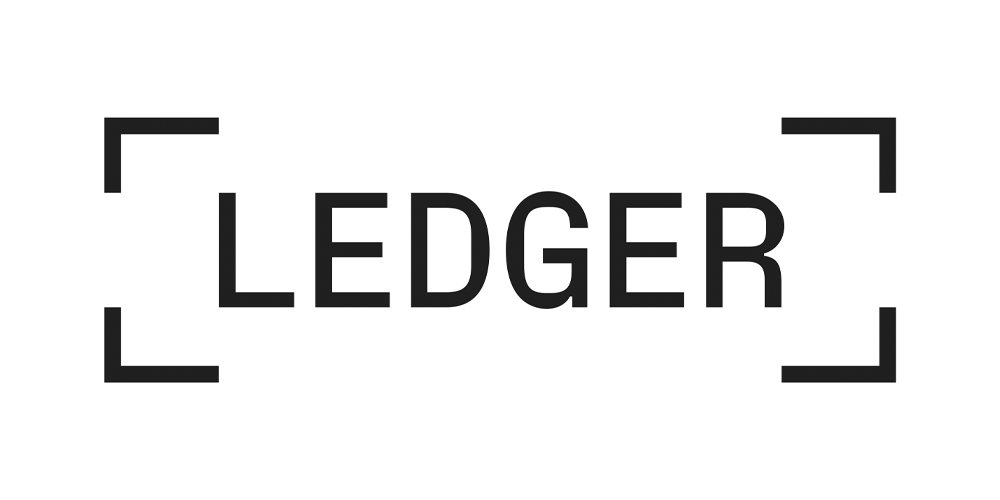Beginners Guide Part 2/3 - What is Bitcoin? With Harry Sudock
Where to find the show
Download Episode MP3 File
The file will open in a new window. Click down arrow to download the file.
“Bitcoin is beautifully simple: from a mind-virus perspective there are only 21 million, what you own, you own, it’s yours, you’re in control. It puts the burden and the responsibility back on the individual, and therefore the opportunity rests on the individual, and so Bitcoin is money for people who are ready to take responsibility for their lives.”
SHOW DESCRIPTION
Harry Sudock is Chief Strategy Officer at Griid. In this interview, we discuss what Bitcoin is: specifically, on what ideological foundation was it developed, what problem was it designed to solve, how it solves that problem, and why is it the best technical solution for solving that problem. It’s a tl;dr of the basic technical features underpinning Bitcoin.
- - - -
This is the second in a series of special What Bitcoin Did shows aimed at opening people up to Bitcoin. In the first episode, we learnt that Bitcoin is a new form of money. In this episode, we discuss what functions Bitcoin performs, which differentiates it from other forms of money. We then discuss the technical innovations that enable it to achieve these functions. In essence, this show focuses on what Bitcoin is.
Bitcoin is rooted in the cypherpunk movement that developed in the late 1980s centred on the US. As digital technology started to proliferate, its capacity to track and record digital activity became readily apparent. Concerned computer scientists, mathematicians and cryptographers acted to develop systems aimed at protecting individual privacy, despite a concerted government that sought to control the development of privacy-providing technology.
The cypherpunks movement included extensive work by many to develop anonymous digital cash. But, despite some incredible breakthroughs, none of these efforts had any material success. It was not until the pseudonymous Satoshi Nakamoto brought numerous strands of all this work together that a viable anonymous and uncensorable digital currency was born.
The innovation centres on four key pillars: a clear and immutable monetary policy ensuing both scarcity and transparency; a proof of work consensus mechanism that provides decentralised security to the system; a difficulty adjustment, which ensures the issuance rate is highly predictable; and finally, its design considerations aimed at prioritising decentralisation.
To the uninitiated, these four key pillars may seem as merely interesting innovations. But, once comprehended, the effectiveness and elegance of Bitcoin’s design is truly breathtaking. The software has worked, day in and day out, for over 14 years, without being hacked. And, it’s all without a leader, or a clearing house, or a central committee dictating policy. Quick, uncensorable and private global settlement. By open-source code. Satoshi Nakamoto is the genius of our times.
TIMESTAMPS
00:01:14: What is Bitcoin and what makes it better money?
00:01:41: Explanation of the Bitcoin ledger and the blockchain
00:02:24: The problem that Bitcoin needed to solve
00:04:05: The importance of decentralisation
00:05:09: Where did Bitcoin come from?
00:06:45: The four pillars of Bitcoin
00:07:52: Bitcoin's monetary policy, halvings, and the 21 million cap
00:09:43: The importance of auditability
00:11:47: Proof of work, and mining
00:13:59: Computational and environmental impact
00:15:33: The difficulty adjustment
00:16:44: Simplifying Bitcoin
00:17:49: Why is Bitcoin the best cryptocurrency, and freedom?
00:20:51: What Bitcoin teaches you, and advice for the overwhelmed
00:22:15: Final comments
SUPPORT THE SHOW
If you enjoy The What Bitcoin Did Podcast you can help support the show by doing the following:
Become a Patron and get access to shows early or help contribute
Make a tip:
Subscribe on iTunes | Spotify | Stitcher | SoundCloud | YouTube | TuneIn | RSS Feed
Leave a review on iTunes
Share the show and episodes with your friends and family
Subscribe to the newsletter on my website
Follow me on Twitter Personal | Twitter Podcast | Instagram | Medium | YouTube
If you are interested in sponsoring the show, you can read more about that here or please feel free to drop me an email to discuss options.
SPONSORS
SHOW NOTES
Connect with Harry:
Glossary:
21 million Bitcoin: Bitcoins’ issuance is capped at 21 million coins. The limit is designed to give it anti-inflationary properties. The Bitcoin issuance declines over time, with the last Bitcoin to be issued in 2140.
Bearer Instrument: Bearer instruments are financial instruments (i.e. cheques, shares, stocks, bonds, future and options contracts) that are owned by whoever possesses them and can be transferred without the need for permission or other authentication.
Bitcoin Block: A collection of Bitcoin transactions that are permanently added to the Bitcoin blockchain every ten minutes.
Bitcoin Cryptography: Bitcoin Cryptography is the use of cryptographic techniques to secure the Bitcoin network and Bitcoin transactions. The security and immutability of the blockchain are ensured by the use of hash functions by the Bitcoin network. Trustless sending of bitcoin is enabled by public key-based digital signatures.
Bitcoin Issuance: Bitcoin Issuance is the process by which new units of Bitcoin are created and released into circulation. The issuance is determined by Bitcoin’s monetary policy. Bitcoins are issued to Bitcoin miners.
Bitcoin Miners: Bitcoin miners are individuals or companies that use specialised hardware and software to batch Bitcoin transactions into blocks and solve a cryptographic puzzle. The batching process involves cryptographically hashing the transaction data, which incorporates the hash of the previous block to ensure the data is connected in a chain. The first miner to solve the puzzle is rewarded with Bitcoin. Given the process used, it is very hard to solve the puzzle, but simple to check that the solution is correct. The block of batched transactions is added to the blockchain for nodes to verify.
Bitcoin Monetary Policy: Bitcoin Monetary Policy is the policy regarding the issuance of Bitcoin, preprogrammed into Bitcoin’s software by Satoshi Nakamoto. The issuance is via block rewards that stagger the release of the 21 million coins every 10 minutes until 2140. The issuance declines over time by the halving mechanism. This monetary policy can only be changed with the consensus of the nodes running the Bitcoin code.
Bitcoin Nodes: Bitcoin nodes are computers that are connected to the Bitcoin network, using a version of the Bitcoin software to download and check both the history and current changes to the Bitcoin blockchain. Each time a new block is produced the nodes help to validate (i.e. check the rules have been adhered to) and broadcast the new Bitcoin transactions across the network. There are thousands of people and organisations around the world running nodes. It is the consensus of these nodes that keeps the network secure.
Bitcoin Software: Bitcoin software is a set of programs and protocols that allow for the transfer of value over the internet using the Bitcoin network. The reference software implementation is called Bitcoin Core, open-source software that any developer can audit and contribute to.
Bitcoin Transaction: A Bitcoin transaction is the transfer of value between two or more Bitcoin wallets. These transactions are initially validated by Bitcoin miners, and then more broadly validated by Bitcoin nodes across the Bitcoin network.
Bitcoin White Paper: The Bitcoin white paper is a document written by Satoshi Nakamoto describing the design and function of the Bitcoin network. It was published in October 2008 ahead of the release of the Bitcoin software. In 9 pages (one of which is citations), it elegantly sets out the rationale and design of the new peer-to-peer electronic cash system.
Blockchain: A blockchain is a distributed digital ledger that records transactions in an immutable, secure and tamper-resistant way. Many Bitcoiners believe that only Bitcoin can act as a viable decentralized Blockchain given that many others make tradeoffs that affect security or decentralization (see the Blockchain Trilemma), and that Bitcoin’s network effect is hard to replicate.
Blockchain Trilemma: The Blockchain Trilema is a term coined by Nick Szabo to describe the three distinct but conflicting properties of blockchain technology: security, scalability, and decentralisation. The central issue of the trilemma is that only 2 of these properties can be supported by a blockchain. Bitcoin was developed by making a tradeoff: security and decentralization have been prioritised over scalability. Scalability has been secured through later innovations that build upon Bitcoin such as the Lightning Network.
Cryptocurrency: Cryptocurrency is a digital asset designed to work as a medium of exchange that uses cryptography to secure its transactions, control the creation of additional units, and verify the transfer of assets. Whilst this definition at face value would include Bitcoin, Bitcoiners believe that Bitcoin is distinct from other cryptocurrencies due to its unique design, development and decentralisation.
Cypherpunks: Cypherpunks are a group of people who are interested in using cryptography to protect personal privacy and promote freedom of speech. The cypherpunk movement developed in the late 1980s following the work of the cryptographer David Chaum on developing ideas such as anonymous digital cash. The cypherpunks grew throughout the 1990s, and many prominent members were cited as being inspirations for the development of Bitcoin by Satoshi Nakamoto.
Difficulty Adjustment: Bitcoin Difficulty Adjustment is a mechanism used to adjust the difficulty of the proof-of-work system used to secure the Bitcoin network. Every 2016 blocks (approximately 2 weeks), the complexity of the cryptographic puzzle is automatically adjusted up or down with the aim of ensuring new blocks are created every 10 minutes.
Halving: The Bitcoin Halving is a process by which the rate of Bitcoin issuance is reduced by half every four years. Bitcoin was first issued at a rate of 50 Bitcoin per block when it launched in 2009. After 3 halving events, this issuance is now at 6.25 Bitcoins per block.
Hash: A hash is a unique fixed-length string of letters and numbers produced from a data input of any length (such as a password, or set of Bitcoin transaction information). Hashing is secure as it is one-way: it is effectively impossible with current technology to reverse a Bitcoin hash to uncover the original data without using brute force i.e. applying random strings until the right one is found. Given the astronomical input-size of hashes used in Bitcoin (a number with 256 zeros after it), even the most powerful computers are unable to break Bitcoin hashes without a significant amount of time (billions of years) and energy. Hashing is used to send individual transactions between peers, and to write new batched blocks of transactions to the blockchain.
Hashrate: The hashrate is the total computational power being used in the process of Bitcoin mining. One hash is one ‘guess’ of the hashed cryptographic puzzle used in the proof of work consensus. It is an important metric to quantify the security of the Bitcoin system i.e. the higher the hashrate, the more costly an attack would be, and thereby the more secure the network is. The current hashrate is circa 350 exahashes per second (EH/s), where 1 exahash = 1 quintillion hashes. Newer hardware can execute higher hashrates for a given amount of electricity.
Hashcash: Hashcash is a proof of work system used to limit spam and denial-of-service attacks by requiring users to perform calculations to obtain a token that can be used to access a service. It was devised by Adam Back, and later formed the basis for the proof-of-work consensus mechanism in Bitcoin.
Ledger: A ledger is a bookkeeping system used to keep track of financial transactions.
Proof of Work (PoW): Bitcoin’s proof of work is a consensus mechanism used to secure the Bitcoin network. Bitcoin miners must expend a certain amount of effort (in the form of energy consumption for computational purposes) in solving a cryptographic puzzle in order to be rewarded with new Bitcoin. The associated energy costs are designed to secure the system. For anyone to significantly influence which transactions get included in the blockchain, they must control over 50% of the hashrate to continuously create blocks that adhere to consensus rules. This means that 1. a significant amount of cost (hardware and energy to power it) is required to attack the network, and 2. such attacks may not be successful while the costs would still be expended. The game theory of proof of work means there is a strong motivation for actors to remain honest.
Satoshi Nakamoto: The pseudonymous creator or creators of Bitcoin, which launched in January 2009. Satoshi was active in Bitcoin’s development up until December 2010. Their identity is unknown, but there is speculation that Satoshi could be one of a number of cryptography and computer science experts.
Mentioned in the interview:
Other Relevant WBD Podcasts:
WBD630: Beginners Guide Part 1/3 - Why Bitcoin? With American HODL
WBD619: Bitcoin Mining & the Energy Grid Transition with Troy Cross & Shaun Connell
WBD618: The Future of Bitcoin Mining & Security with Sam Wouters
WBD607: How Bitcoin Can Expand the Grid in Africa with Erik Hersman
WBD616: The Evolution of Bitcoin Narratives with Harry Sudock
WBD597: How Lightning Drives Global Bitcoin Adoption with Danny Scott
WBD571: The White House is Wrong About Bitcoin Mining with Nic Carter
WBD536: How Crypto Replayed the 2008 Financial Crisis with David Morris
WBD532: The Role of Bitcoin Maximalism Part 2 with Pete Rizzo
WBD518: Bitcoin Privacy with Matt Odell












